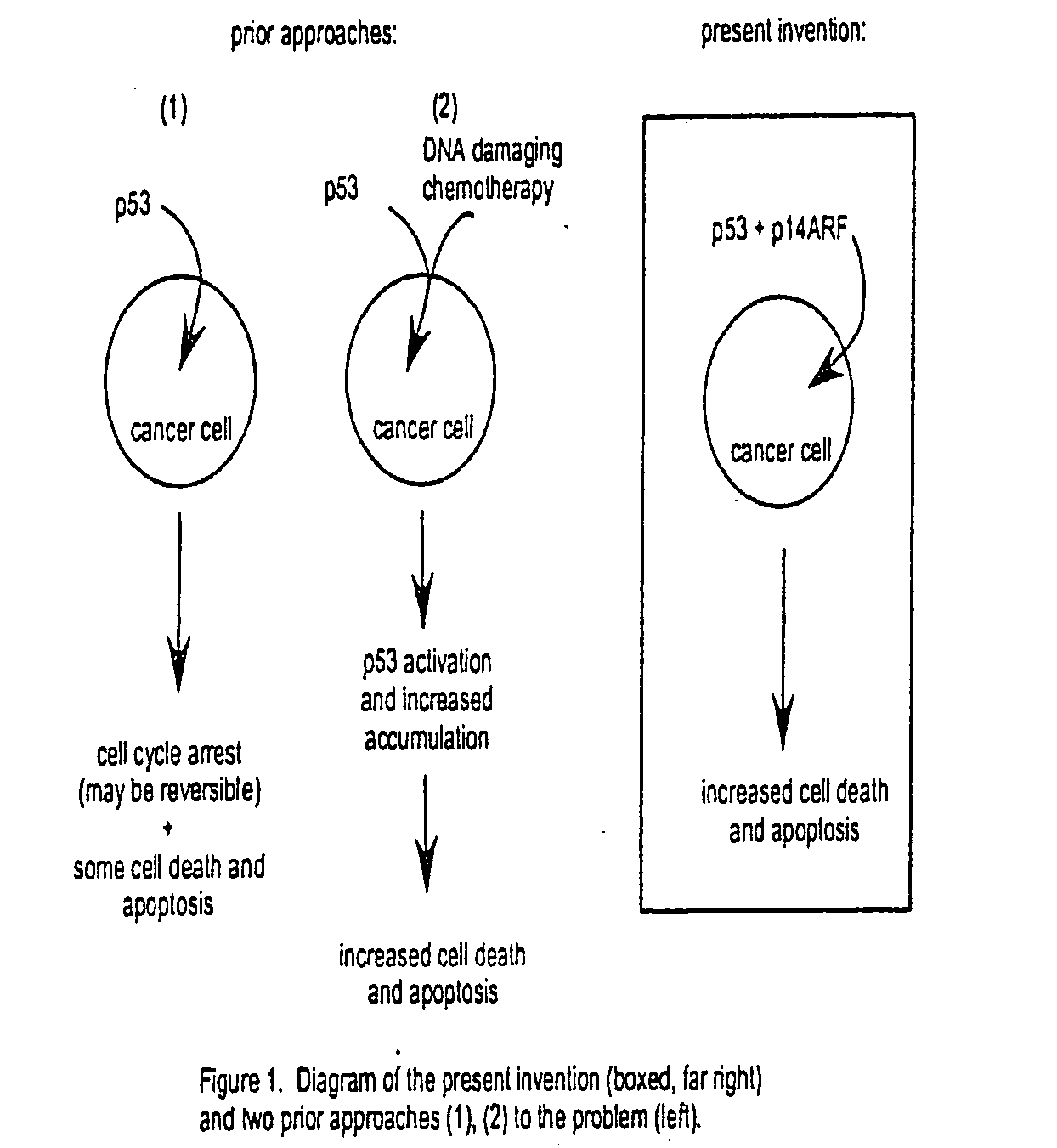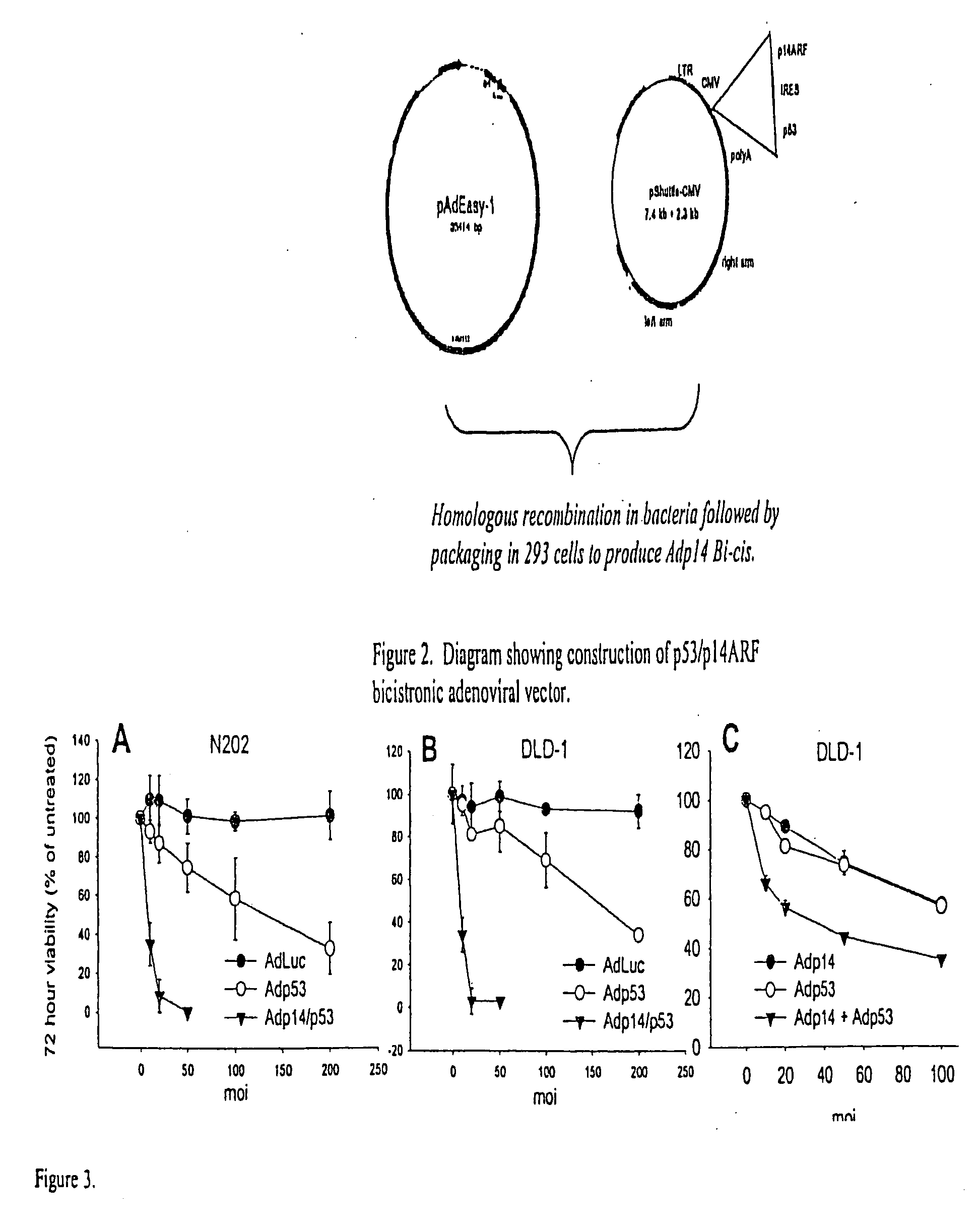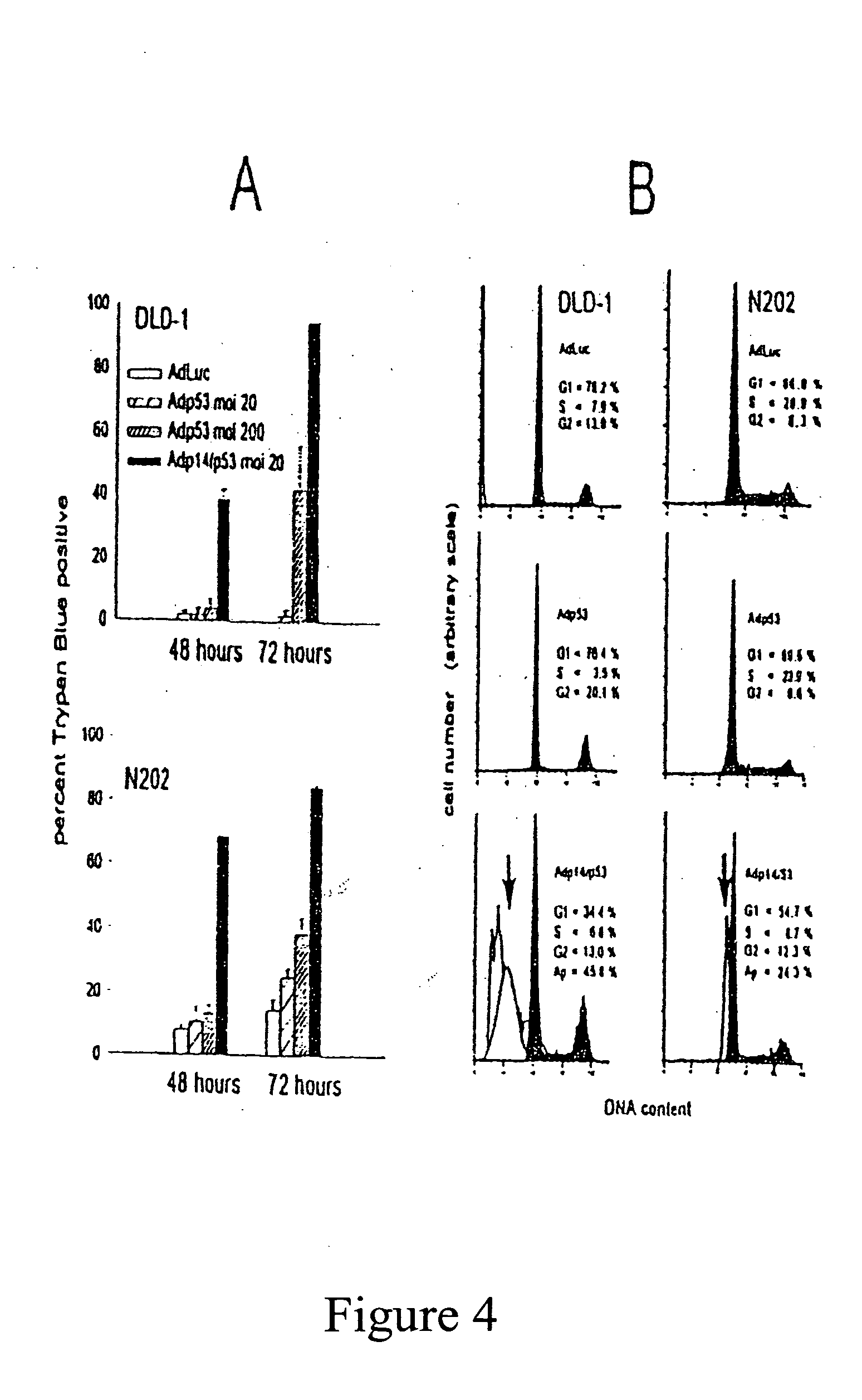Tumor suppression through bicistronic co-expression of p53 and p14ARF
a bicistronic co-expression and tumor technology, applied in the field of cancer therapy, can solve the problems of toxic side effects, inability to cure most cancers, and inability to treat with adenoviral p53 vectors
- Summary
- Abstract
- Description
- Claims
- Application Information
AI Technical Summary
Problems solved by technology
Method used
Image
Examples
example
[0023] We constructed a bicistronic adenovirus encoding ARF and p53 (denoted Adp14 / p53 or AdBi-cis), using the AdEasy kit of Quantum Biotechnologies. The p14ARF and p53 coding sequences were obtained from normal human fibroblast RNA by RT-PCR amplification. The bicistronic cassette containing an internal ribosome entry site (IRES) flanked by multicloning sites was obtained from the pIRES vector of Clontech.
[0024] To obtain the full length adenoviral genome, the pSHUTTLE-CMV construct containing the ARF-IRES-p53 insert was recombined in bacteria with the AdEasy vector (which encodes the remainder of the adenoviral genome minus E1 and E3, followed by packaging in 293 kidney cells.
[0025] We constructed the bicistronic vector for p14ARF and p53 as described above (see FIG. 2). In a similar manner we prepared adenoviral vectors encoding full length ARF alone (Adp14). An adenovirus encoding the p53 tumor suppressor under the control of the Cytomegalovirus promoter was provided by Introg...
PUM
 Login to View More
Login to View More Abstract
Description
Claims
Application Information
 Login to View More
Login to View More - R&D
- Intellectual Property
- Life Sciences
- Materials
- Tech Scout
- Unparalleled Data Quality
- Higher Quality Content
- 60% Fewer Hallucinations
Browse by: Latest US Patents, China's latest patents, Technical Efficacy Thesaurus, Application Domain, Technology Topic, Popular Technical Reports.
© 2025 PatSnap. All rights reserved.Legal|Privacy policy|Modern Slavery Act Transparency Statement|Sitemap|About US| Contact US: help@patsnap.com



